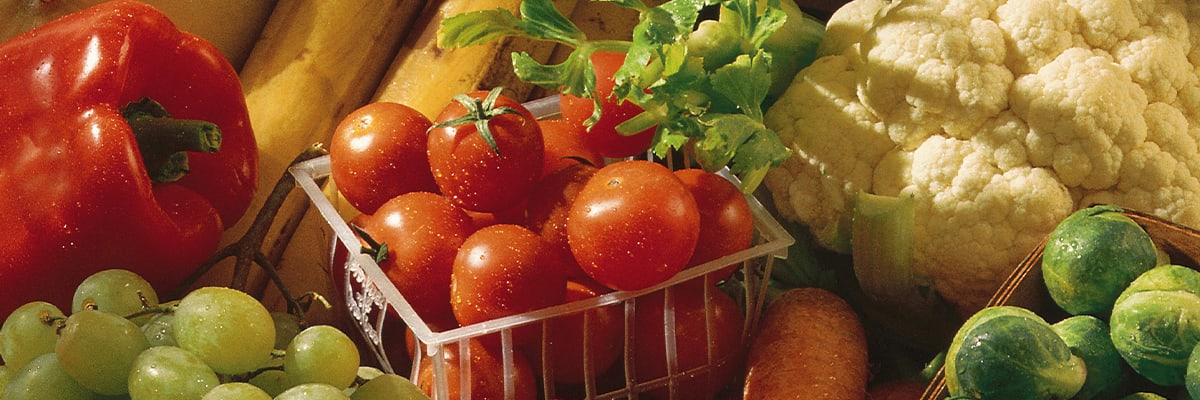Relative Humidity: The Key to Fresh Produce?
Why Monitoring RH levels During Transport and Storage is the Key to Fresh Fruits and Vegetables

At Sensitech, we know that good temperature control is important for maintaining the post-harvest freshness of fruits and vegetables. Yet there are other factors that can affect produce freshness, which are similarly important to track, measure, and control —factors like relative humidity.
Relative humidity (RH) is the moisture content of the atmosphere, expressed as the ratio of the actual moisture content to the total possible moisture content without condensation forming. Because warmer air is more capable of holding moisture than cooler air, RH is temperature-dependent. Knowing the RH inside a shipping container can be crucial for maintaining freshness, especially for produce with high water content like lettuce, cucumbers, mushrooms, strawberries, and watermelons. Both low RH and high RH may have negative impacts on produce quality, particularly if RH levels are out of the recommended specifications for long periods of time.
By controlling RH over the course of a product’s supply chain, profits can be maximized, food waste reduced, and freshness optimized.
Effects of low RH on fresh produce
Produce handled at RH levels lower than its relative water content may experience dehydration, shriveling, decreased gloss, decrease in market value, and higher susceptibility to disease.
In addition, for products sold by weight, water loss can lead to salable weight loss and reduced profit. A 2% weight loss may not affect the appearance quality of a product, but the cost of that lost weight can be significant. For example, for a pallet weighing 500 kg, 2% accounts for a loss of 10 kg per pallet. If the product is valued at $10 per kg, at retail pricing this weight loss results in a loss of $100 per pallet.
Water loss due to low RH can also be affected by the following characteristics:
- Skin. An apple, for example, will lose moisture at a slower rate than a head of lettuce, which has no skin and therefore higher water permeability.
- Surface/volume proportion. Leafy vegetables (lettuce, spinach), which typically have a high surface-to-volume ratio, are more susceptible to dehydration than cylindrical-shaped produce, such as a potato.
- Damage. Cuts, lesions, and marks on the surface of the product due to mishandling can lead to higher water loss and increase the product’s susceptibility to disease and decay.
- Vapor pressure deficit (VPD). VPD is the force which drives water from the produce to the surrounding air. The VPD is influenced by the difference between the temperature of the produce, and the temperature and RH of the surrounding air. Higher temperature and RH differences lead to higher water loss.
Effects of high RH on fresh produce
On the other end of the spectrum, produce handled at RH levels higher than its relative water content is likely to encounter condensation, disease development, or physiological disorders, resulting in faster senescence of the product.
When the RH of the atmosphere reaches saturation (100%), water vapor will condense on the surface of the produce. The temperature at which condensation forms is called the dew point, and it is the most useful humidity parameter when dealing with condensation problems. Psychrometric charts are often used to determine the relationship between temperature, RH, and dew point.
Unwanted condensation on products may encourage faster disease development or physiological disorders, resulting in decay and loss of product. Condensation can also damage labels or cardboard packaging materials, resulting in problems when unloading the cargo.
High RH levels (85-95%) are usually recommended for transporting most fresh fruits and vegetables in order to prevent moisture loss. However, produce such as dried onions, garlic, dates, dried fruits, and nuts need to be transported in conditions of lower relative humidity. For example, the optimal RH range for dried onions and garlic is 65-70%.
Takeaway
Maintaining both temperature and RH at the ideal recommended specifications (specific for each produce type) during transport and storage is vitally important to ensure freshness and increase shelf life.

